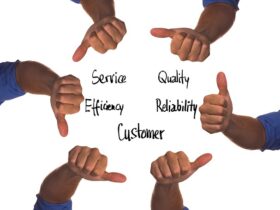In the last few years, diversity and inclusion have been on the high agenda of organizations to maintain their competitive advantage in the global economy. Businesses that have earned a reputation by providing a very inclusive environment benefit, too, with better employee engagement, higher creativity, and improved performance. Building a diverse and inclusive workplace isn’t about the numbers; it is a cultural check that everyone feels valued, respected, and heard.
Let’s dive into why diversity and inclusion matter in the workplace, what types of D&I initiatives are effective, and how they create a more resilient workforce.
Why Diversity and Inclusion Matter in the Workplace
Diversity represents a collection of individual differences and includes, but is not limited to, racial differences, gender, age, disability, ethnicity, religion, sexual orientation, and many others. On the other hand, inclusion holds for the environments where people feel welcome and valued enough to fully commit. In one word, diversity is about representation; inclusion is about involvement.
From my perspective, I think when a diverse team brings different perspectives. That is the assignment that has to be done with a diverse background and expertise. The different perspectives helped us in not only evading such potential pitfalls but led us to creative solutions that may have never come into consideration. Since then, I learned that diversity is not merely of added value but an emerging need.
Benefits of a Diverse and Inclusive Workforce
Creating a diverse and inclusive workplace brings numerous benefits, including:
Increased Creativity and Innovation: Individuals from different backgrounds and experiences tend to contribute different ideas toward achieving the mission at hand. Thus, teams with diversity in them tend to think outside of the box, which often leads to more innovative solutions.
Better decision-making: diverse teams have proven to make better decisions. Diversity of thought means that analysis can be more complete, and any potential risks and benefits are fully realized.
Increased employee engagement: when individuals feel they are a part of something, they become far more engaged and motivated to contribute. A friendly workplace that has a sense of inclusiveness helps to facilitate such an atmosphere in which people can open up with their thoughts.
Improved Company Reputation: Companies that embrace D&I are looked upon as progressive and visionary. This helps in attracting the best people and consolidating relationships with clients who also believe in diversity.
Effective Initiatives on Diversity and Inclusion
Creating a truly inclusive workplace is way beyond policies or just for representation purposes. It is about a due course of actions concerning commitment to each different perspective the individuals bring in. The following are some grassroots, practical, and tested initiatives on D&I that will contribute to a better workforce.
1. Diverse Hiring Practices
Start off by casting a wider net in regards to recruiting. This can be done by searching for candidates from all walks of life and making sure the hiring criteria applied are not biased. Candidates may be found through diverse job fairs, organizations that cater to underrepresented groups, and job postings written in all-inclusive language.
I remember hiring for a position where we consciously reached out to several community job boards. It brought in not only a greater diversity of applicants but also a candidate with some unique insights who furthered the approach of our team.
2. Run Bias Training
Unconscious bias tends to always be the single most significant inhibitor to true inclusiveness. Training in bias helps employees identify their biases and how those biases may lead them to act and make decisions. It is becoming aware of one’s assumptions and learning how to counteract them.
We held one session in the workplace where we were allowed to share how biases shaped our interactions. It was an eye-opener wherein we could reflect on how we might be better at being supportive and open-minded colleagues.
3. Mentorship and Sponsorship Programs
The mentorship programs would support the active employment of experienced employees as mentors for either newcomers or people who come from underrepresented backgrounds. Sponsors, on the other hand, are supposed to champion and actively promote their mentees within the organization. Both mentorship and sponsorship offer paths through which underrepresented employees can obtain the skills, knowledge, and networks that form the basis of career advancement.
I once had a mentor who took the time to understand my goals and challenges. That mentorship didn’t just help me grow professionally; it helped me understand the value of paying it forward and supporting others in similar ways.
4. Encourage Employee Resource Groups (ERGs)
The ERGs are employee-led voluntary groups that offer a safe space for employees to connect based on shared interests or backgrounds, such as through a Women’s Network or LGBTQ+ group. These foster belonging and often serve to educate the broader workforce on issues affecting these particular communities.
ERGs can also serve as an insight into how the company can support its diverse employees. For instance, an ERG may make suggestions in developing policies that are helpful to working parents balancing between work and personal life, observing religious holidays, or other cultural observances.
5. Inclusiveness in Culture through Transparency in Communication
The endeavor of creating an inclusive culture is more than policies; it’s a process that requires constant communication and active listening to maneuver. Encourage open dialogue, welcome feedback, and make the theme of inclusivity one of high priority. Regularly scheduled town halls, feedback sessions, and anonymous surveys give employees a voice and help leaders identify blind spots.
The insights we got during an open Q&A forum over inclusivity from my company were worth their weight in gold. Telling personal stories about how certain company policies affected them resulted in changes to those policies that made all the difference.
Addressing the Challenges
Even with great enthusiasm, bringing D&I is not without its challenges, even when there is a will. Following is a set of common challenges along with their solution:
Resistance to Change: A few employees may feel uncomfortable with change; after all, they may think this does not apply to them. To that effect, explain how the benefits of diversity pertain to all and highlight how an inclusive culture adds value to the organization at large.
Measuring Success: How do you know whether efforts toward D&I are working? Success is sometimes hard to measure, but it’s easier when your goals are clear, and you track metrics on diversity. For example, track representation, promotion rates, and employee satisfaction to show progress.
Growing with Inclusivity: During times of growth, it becomes very easy for the companies to lose sight of D&I. Embed diversity and inclusion into the DNA of the company’s culture, policies, and practices to keep the core intact.
Managing Different Points of View: With teams being diverse, there are bound to be many reasons for disagreements or misunderstandings. Manage this positivity through open channels of communication and conflict resolution tools that evoke respect and cooperation within the team.
Long-Term Impact of Diversity and Inclusion
Long-term, diversity and inclusion can change not only your team but the entire organization. And with that comes an organization that is adaptable, creative, and ready for any possible complexity presented by today’s global market.
The project that stands in my mind dealt with a product developed to cater to the needs of an even wider audience. Because of the leverage gained from multiple perspectives, we could solve with innovation and deliver accessibility to more customers. This success story keeps reminding me how seriously we need to pursue inclusion.
In conclusion, creating a diverse and inclusive workplace is a journey, not a destination. It calls for commitment, open-mindedness, and a genuine effort to build a better environment for all. D&I practices intelligent and insightful build a workforce that is supportive, strong, and vibrant to add value to employees, clients, and the company itself.
Make a difference in your organization by taking small but very powerful steps. Diversity and inclusion go a long way in developing your team and the organization at large.

































Just a smiling visitant here to share the love (:, btw great style. “Justice is always violent to the party offending, for every man is innocent in his own eyes.” by Daniel Defoe.
I really like what you guys are up too. This type of clever work and exposure! Keep up the great works guys I’ve you guys to our blogroll.